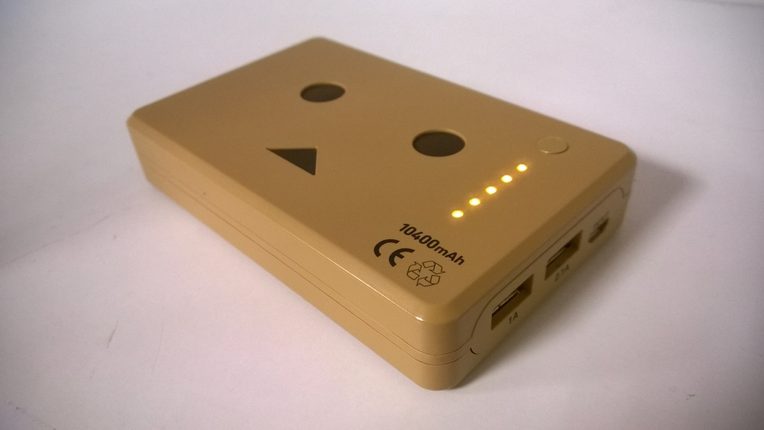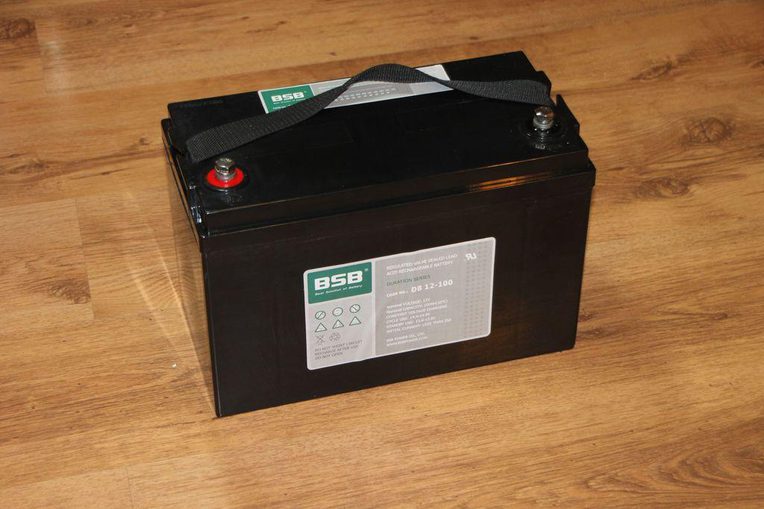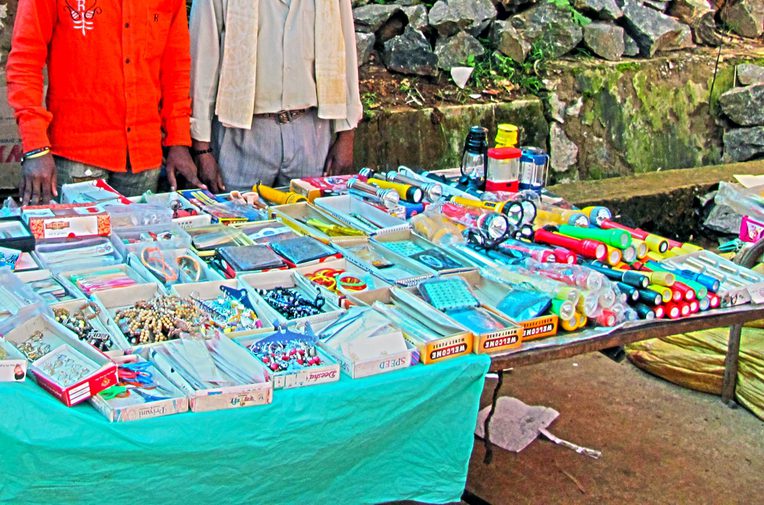Our Electric Backup
From the Series: Our Lives with Electric Things
From the Series: Our Lives with Electric Things


It happens regularly: late in the day, running on a low smartphone battery, I whip out my power bank and plug my phone into it via a USB cable; someone around me looks at it, pulls out their own power bank, and says: “Wow, we have the same one.” Now our two chongdianbao (literally “electricity-charging treasures”), sit a few inches apart, LEDs blinking, tasked with the silent but fundamental duty of juicing up our mobile devices. “Yep,” I usually reply, “great choice.”
I bought my chongdianbao in Hong Kong’s Golden Computer Arcade. It was priced at HK$320. I bargained it down to HK$300 and still probably overpaid, but I really wanted this model: the Danboard version of the cheero Power Plus, a light-brown brick with five yellow LEDs, two USB outputs, and stylized facial features modeled after Danbo, a robot character from a popular manga—Japanese-designed, yet of course made in China.
Chongdianbao have been an integral component of the everyday media ecologies I traversed during my fieldwork. Passengers on an overnight train from Shenzhen to Shanghai watched entire seasons of a militaristic TV series on a blaring tablet powered by a chongdianbao. A friend in Beijing was upset for forgetting her chongdianbao at home and being unable to reply to heated discussions on her microblogging feed later in the day. Another friend introduced his oversized chongdianbao as his “iPhone’s son,” capable of extending his smartphone’s battery life over his two-hour commutes.
The popularity of chongdianbao, portable power banks granted the humorous and affective qualification of treasure, illustrates how the electrical capacity sheared off by mobile-device design in search of sleekness becomes rematerialized in an accessory dedicated to storing and redistributing electricity according to the social and temporal necessities of everyday life in today’s China.

In 2010, a technician came to my apartment in Oakland, California to fix a faulty Internet connection. He did his work and left. Later, I returned home to find a foreign object perched on my coffee table: cuboid, plastic exterior, no bigger than a loaf of bread. I neared. “Lead-acid battery,” its label read. My insides jumped; the now-strange familiar object gave me an uncanny jolt. I was months away from starting dissertation fieldwork on lead politics in Peru. Suddenly lead, stored, contained, and labeled, was already in my living room.
This lead-acid battery backed up power to my modem, but as it turned out, I owned a second one too. Under the hood of most cars is a lead-acid battery that powers the engine starter, and this is where most lead ends up today (Mudd, Jowitt, and Werner 2017, 1161). The lead-acid battery stores energy for cheap. Invented in 1859, the ongoing thrift of the world’s first rechargeable battery keeps it competitive on the global energy-storage market. Valued at $46 billion in 2015, the commerce in lead-acid batteries promises future growth not only for cars, but also (perhaps ironically) for fully electric vehicles and off-the-grid renewable energy production.
“It’s your ultimate fetish object,” my roommate (also an anthropologist) joked. The battery lurked in the corner of our living room for months, until a technician finally retrieved it. During fieldwork, I often recalled this anxious, but fascinated encounter with the lead-acid battery. In Peru, uncontained minerals frequently make human lead-exposure levels near mining sites ten times higher than those measured recently in Flint, Michigan. For an anthropologist of lead, this battery was the perfect provocateur to break open an energetic field of relations between myself and labors of toxicity in Peru, otherwise obscured between the walls of my home and under my car’s dented hood.

“I’m no outsider, brother,” calls out Rajesh Sundhi. “If what you buy breaks down, you’ll always find me here.”
Another market day in Kakariguma, a one-road town in the highlands of Odisha, India: the roadside lined with traders peddling jewelry, watches, wallets, and belts. In their midst lies Rajesh Sundhi’s battery-powered flashlight and lantern stall.
Townsfolk and rich farmers come to him for backup, an alternative, electrochemical source of light for blackouts when the grid goes down. The unelectrified rural poor, whose homes have never been connected to the grid, come to him for a primary source of light, a supplement to kerosene and candles.
Rajesh’s stock of made-in-India and made-in-China devices are neatly laid out on a green tarpaulin. Whatever their provenance, though, Rajesh and his customers know that they are made to break. People here take for granted the limits and fragility of our worlds with electric things, what Steven Jackson (2014, 221) calls “broken world thinking.”
Rajesh’s sales pitch—“I’m no outsider, brother”—is both a dig at the stallholders who travel here each week from the neighboring states of Andhra Pradesh and Chattisghar, encroaching on the patch he occupies with his son, and a claim. You might not be able to trust the things you buy, he is saying, but you can trust me to keep them working.
In the moral economy of the haat, or rural market, the successful vendor of unreliable electric things must also be the backup. Beneath his trestle table Rajesh keeps a set of screwdrivers, as well as a box of LEDs, switches, and plastic screens salvaged from old devices. Below the counter he is a vendor of repairs and spares, a reserve of technical knowhow, tools, and parts. In places like the highlands of Odisha, where electricity is never experienced as constant or taken for granted, it falls to the vendor of battery-powered flashlights to maintain modernity’s illusive promise of continuous, uninterrupted supply.
Jackson, Steven J. 2014. “Rethinking Repair.” In Media Technologies: Essays on Communication, Materiality, and Society, edited by Tarleton Gillespie, Pablo J. Boczkowski, and Kirsten A. Foot, 221–40. Cambridge, Mass.: MIT Press.
Mudd, Gavin M., Simon M. Jowitt, and Timothy T. Werner. 2017. “The World’s Lead-Zinc Mineral Resources: Scarcity, Data, Issues, and Opportunities.” Ore Geology Reviews 80: 1160–90.